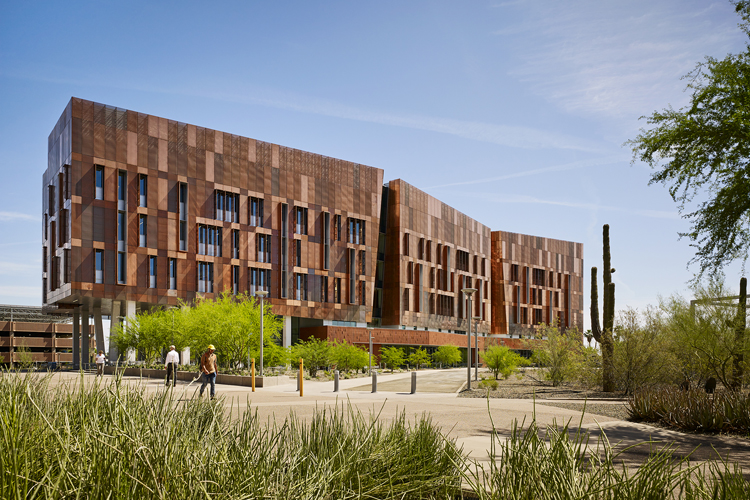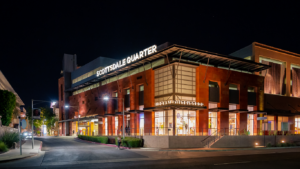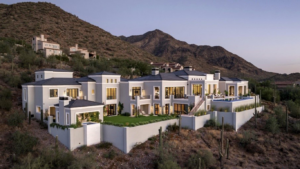The $120 million Biodesign Institute C research building at Arizona State University (ASU), which was constructed by McCarthy Building Companies and completed in June 2018, recently received LEED Platinum certification from the U.S. Green Building Council.
The LEED rating system, developed by the U.S. Green Building Council (USGBC), is the foremost program for buildings, homes and communities that are designed, constructed, maintained and operated for improved environmental and human health performance. Biodesign C achieved LEED Platinum by earning 85 points for implementing strategies and solutions aimed at achieving high-performance in: sustainable site development, water efficiency, energy and atmosphere efficiency, materials selection, indoor environmental quality and innovation in design. LEED Platinum, the highest LEED rating available, requires a project to earn 80+ points on the U.S. Green Building Council’s rating scorecard.
“Biodesign C is a great example of effective collaboration between users, designers and builders at the highest level,” said Bruce Nevel, ASU Facilities Development and Management associate vice president. “The building epitomizes the balance between energy efficiency, functionality, flexibility and architectural innovation. ASU is extremely proud of not only the design and construction of this world-class research building but equally proud of the invaluable research and benefits to society which will be discovered and generated from this remarkable building.”
The 191,035-square-foot research facility includes five stories, a mechanical penthouse, plus a basement that connects with the ASU Biodesign Institute B building and houses the world’s first compact free electron X-ray laser. The project includes approximately 60,000 square feet of flexible lab space for up to 80 lead researchers and 300 staff who are supporting ASU’s goal of increasing research revenue to $815 million by 2025. The building’s adaptable design accommodates multiple types of scientific research, including chemistry, biological sciences and engineering research. The building, comprised mostly of wet laboratories and offices, also includes high-bay spaces.
Following ASU’s green building standards, Biodesign Institute C was designed and constructed to the highest levels of sustainability and included an innovative HVAC system that limits its energy and environmental footprint. The project scored highest in the Energy and Atmosphere, Innovation in Design, and Sustainable Sites categories within the LEED certification process.
“The Biodesign C project featured recycled content and regional materials and had a process in place for construction waste management,” said Justin Kelton, president of McCarthy Building Companies’ Southwest division. “McCarthy is incredibly proud to have been a part of this world-class facility. The LEED Platinum certification reflects the commitment to sustainability from everyone on the project team starting first and foremost with ASU.”
According to the U.S. Green Building Council, from 2015 to 2018 LEED-certified buildings generated an estimated $1.2 billion in energy savings, $149.5 million in water savings, $715.3 million in maintenance savings, and $54.2 million in waste savings.
In addition to McCarthy, the project team also included architects Zimmer Gunsul Frasca (ZGF) and BWS Architects.




